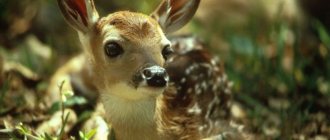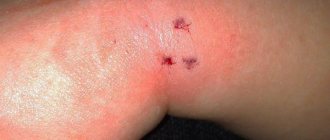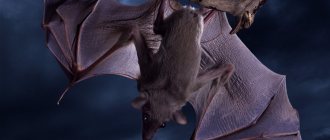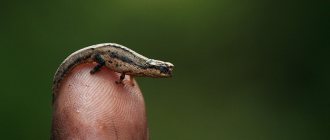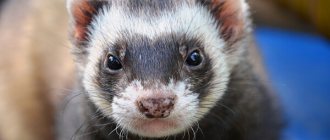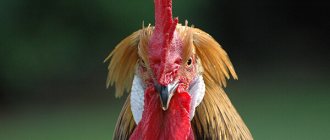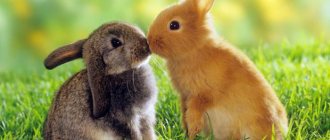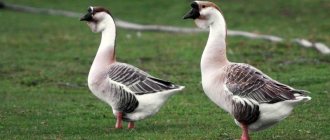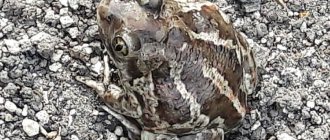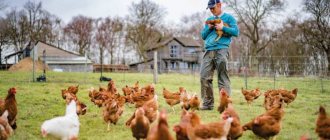Description and appearance
So, who is this mouse? Mice are animals belonging to the rodent order and the mouse family. Regardless of the species, all mice are distinguished by their small size and anatomical features, namely, the presence of an elongated, pointed muzzle, a dense body, a long tail, short paws with movable fingers and tenacious claws.
Mice live all over the planet, often settling near people. Some species are classified as synanthropic.
How does a mouse skeleton work?
The mouse skull is oval, with clearly visible areas of bone fusion. Rodents have a well-developed lower jaw, which can move in different directions.
Skeleton
The mouse skeleton is light, mobile, elastic, but at the same time very durable. The neck consists of 7 vertebrae connected by a column, and there are 20 in the tail. The pubic bones of mice are connected by ligaments. Due to this, during childbirth the bones move apart and females can give birth to rather large (compared to the size of the mother) mice.
Features of teeth
The structure of a mouse's teeth is very unusual. The front incisors (2 upper and 2 lower) do not have roots and grow throughout the life of the rodent. Therefore, animals constantly have to gnaw on something very durable in order to wear down their teeth at least a little. If this is not done, the mouse will not be able to close its mouth and eat normally.
Mice have no fangs. The molars, located on the sides of the jaw, have an uneven surface. It is with their molars that rodents grind food that gets into their mouth.
Sense and smell organs
As for the senses, mice have rather poor vision, acute hearing and an excellent sense of smell. The eyes of mice are rather poorly developed; most individuals have severe farsightedness. Rodents see best in twilight, but in complete darkness they navigate with the help of sensitive vibrissae.
Mice hear very well. Their ears can even perceive ultrasound. Rodents' sense of smell is also excellent; it helps them search for food, recognize relatives and navigate the area.
Wool and color features
The body of mice is covered with thick, smooth fur. Features of coloring - on the belly the fur is lighter than on the back and sides, and the border is quite clear. The color of wild mice varies from sandy to dark brown, almost black. The most common colors are gray, brown, red. Sometimes there are stripes or spots on the skin.
It’s interesting that the further south a mouse lives, the lighter its fur.
Dimensions and physiological features
Depending on the species, the size of mice varies from 6 to 18 cm, but the vast majority of rodents grow to 8 – 11 cm. The length of the tail can range from 60 to 100% of the body length, in some individuals the tail is even slightly longer. How much an animal weighs depends on its size. The average weight of a mouse is about 20–25 g.
The average body temperature of mice is +37.5…39⁰С. A rodent's heart beats at a rate of about 600 beats per minute. Mice run quite fast, many varieties can swim, but they do this only when absolutely necessary.
Differences between male and female
Sexual dimorphism in mice is not pronounced. It is impossible to distinguish a male from a female either by size, weight, or color. There may be some differences in character. According to studies, females are calmer, while males are more likely to show aggression.
Reproduction and lifespan
The mouse is a polygamous animal. Males and females do not create families and disperse immediately after mating. Rodents reach sexual maturity at three months of age. Pregnancy lasts 18–22 days, after which 3 to 10 pups are born. The cubs are born completely helpless. They have no fur, ears and eyes are closed.
With little mice
Mice are mammals. The female feeds the mice for the first 3 weeks after birth. In the fourth week of life, the pups become independent. Mice can breed all year round. During the year, the female brings from 3 to 9 litters.
Typically, the lifespan of a mouse in nature is 1.5–2 years, but in general rodents can live 5–7 years.
average life expectancy
How many years mice live depends on environmental conditions, dietary habits, and a number of other factors. The average lifespan of mice in the wild is about three years.
Factors that reduce the population size and life expectancy of individuals include natural enemies, infectious diseases, abnormally high or low temperatures, and poor nutrition.
For example, the lifespan of decorative mice, regardless of the size of the individual, is about six years. This is easy to explain - animals kept as pets receive a sufficient amount of food and elements important for the body.
They also do not suffer from adverse weather conditions, are protected from predators and most diseases.
How do they behave and where do they live in their natural environment?
The life of mice is a constant bustle, searching for food and eating it. Habits are related to the fact that animals need to maintain body temperature. In addition, rodents have to be constantly on guard to avoid becoming prey to predators. The lifestyle depends on the species - some mice are active during the day, others at night.
Most often, mice live in large colonies. Each pack has a leader who controls the others. Sometimes conflicts and struggles for power arise. Such collisions can cause the disintegration of a mouse family.
Mice live in burrows that they dig underground. Most often, a hole consists of 1-2 nests connected by passages, several storage rooms and exits to the surface.
Harm
Damage from mice House mice, with their huge numbers, spoil grain fields. They don’t so much gnaw grain as they dig tunnels and form embankments. The stem falls to the ground, the grain is damaged, and difficulties arise during harvesting.
The main harm caused by a house pest is damage to food supplies and animal feed. Pests contaminate them with feces, urine, and leave behind many bacteria and pathogens.
Undoubted harm is caused to furniture, decorative items, books, and clothing. They chew wood, plastic, rubber, and electrical wiring. For these reasons, primitive man tamed the cat, which successfully destroys rodents.
House mice are carriers of dangerous diseases:
- intestinal infections;
- plague;
- pseudotuberculosis;
- fever;
- rabies;
- tularemia;
- leptospirosis.
Recently, scientists have announced the possibility of transmission of breast cancer by mice. Diseases are spread through feces, urine, saliva, ectoparasites, and bites. A person is simply obliged to combat pests on the territory of his own home.
Diet in natural conditions and near humans
Mice prefer plant foods, namely:
- corn;
- seeds;
- nuts;
- roots, stems, leaves and buds of plants;
- vegetables fruits.
They eat mice and insects, larvae, spiders.
Nutrition
The diet of a mouse entering a human home is more varied. Unpretentious animals eat cereals, bread, dairy and meat products, soap, and candles. Even the smallest rodent can cause serious damage by chewing wires, furniture, and books.
Wool
The creature, based on the descriptions of different species, also differs in color. In 75% of cases, the mammal is gray, dark gray, or brown. This coloring helps to hide from predators and makes them invisible at night.
Mexican piscivorous species have yellow or orange fur. Some species are light yellow in color. Representatives of Honduras are albinos with yellow ears and nose.
The body and head are covered with fur. The wings are bare, with soft skin. This feature also applies to young nocturnal animals. The fur can be thick or sparse, with long or short pile. The habitat of the species plays a role here.
Interesting fact! There really is a vampire bat. But it feeds exclusively on the blood of small animals. It poses no danger to humans, even if she is very hungry. Maximum harm from flyers: babies fly poorly, so a collision may occur. Only the cub suffers from such blows.
Enemies of mice
The mouse is the most important link in many food chains. For some animals, mice are the main source of food. The main enemies of mice:
- snakes and large lizards;
- mammals (cats, foxes, small mustelids, mongooses, wolves, badgers, hedgehogs);
- birds (owls, eagles, owls, kites, hawks, crows).
Sometimes mice become victims of their close relatives - rats. Yes, and the answer to the question can a mouse eat a mouse is also yes. This happens very rarely, but mice deprived of the opportunity to get food can attack their weaker relatives.
And, of course, we must not forget about the main enemy of house mice – humans.
Secluded housing
In most cases, the house mouse settles on soft soil that is not prone to drying out. To make it easier to make moves, the walls of the tunnels did not collapse. They build a hole 100 cm long. There must be an entrance and 2 emergency exits. The nest chamber is built at a distance of 30 cm from the ground surface. In winter they go deeper - up to 65 cm in depth. The diameter of the nest is about 25 cm. House mice prepare a soft bedding from twigs, leaves, moss, and all convenient materials.
Life of a House Mouse
House mice often inhabit ready-made burrows of voles, moles, hamsters, and other rodents. Or they build a nest under stones, in natural depressions in the ground, under a mound of leaves.
In human housing, house mice place their nests in well-protected, secluded places. Prefer to settle:
- under the floor;
- between walls;
- in the attic;
- under trash cans;
- in places where food waste accumulates;
- in the vegetable store.
To build a nest, various available, suitable materials are used: straw, pieces of fabric, twigs, hair, feathers, polystyrene foam, polyurethane foam.
Kinds
The mouse subfamily is one of the most numerous, it includes more than 500 species of rodents, which are combined into 121 genera. Let's look at a few of the most common varieties.
Harvest mouse
Field mice are one of the largest groups of rodents. The size of voles ranges from 8 to 12 cm. You can recognize a field mouse by its color; its fur is brownish-brown, often with reddish markings, a rather wide dark stripe is visible on its back, and light gray fur on its belly. These rodents live in Europe, China, Mongolia, and Korea.
Typically, field mice live in open spaces - fields, meadows. There they dig shallow burrows or colonize existing natural shelters. Sometimes voles can settle in garden plots and even enter houses.
The field mouse is cautious and timid, and practically does not detect its presence. You can most often hear these mice squeaking only if they are caught in a trap.
House mouse
The house mouse is a rather small species, the body size of the animals is from 6.5 to 9 cm. The color is dark, brownish-gray, the abdomen is light. House mice have perfectly adapted to living near humans. They can live in houses, bathhouses, and outbuildings.
House mice are the most common species, as they settled across all continents along with people. These rodents are found everywhere, with the exception of the Far North, Antarctica and high mountain areas.
Herbal
One of the largest representatives of the mouse subfamily. The body size can reach 15 – 18 cm, the tail length is slightly less. The coat is elongated, grayish-brown.
Herbal
The homeland of these rodents is Southeast Africa. They live both in the savannah and in tropical bushes. Often found in pastures, gardens, and floodplains. Grass mice, unlike their relatives, lead a diurnal lifestyle.
Lesnaya
The wood mouse got its name because, unlike its relatives, it chooses mixed and deciduous forests for living. It can be found in steppes and even on rocky areas. In nature, the wood mouse tries to occupy natural shelters (empty holes of other animals, voids between stones, rotten stumps), but if necessary, it also digs holes.
The rodent's body length is 8–10 cm, the length of the tail is almost equal to the length of the body. The color is reddish-gray, the fur on the belly is lighter. A distinctive feature is a small yellowish spot on the chest.
Gerbil
Gerbils are a separate subfamily, in which there are more than 100 species of rodents. The body length of the gerbil, depending on the species, is from 6 to 20 cm, the tail length is from 6 to 24 cm. The color is dull, inconspicuous, most often the coat is sandy or muted brown. The difference from most of its relatives is its long, well-furred tail.
Habitat: arid steppes, deserts and semi-deserts. Gerbils are predominantly diurnal and do not hibernate in winter, but become more lethargic in winter.
Shrew
It is very easy to distinguish shrews from other mice. These rodents have a long, strongly pointed muzzle with a slightly curved nose at the end. Shrews are small rodents with thick fur of an ash-gray, reddish or buffy hue.
They prefer to live in places with high humidity; some species lead a semi-aquatic lifestyle. They occupy the burrows of other animals or dig their own in the ground. They can build nests under fallen trees or dead wood, in rotten stumps, and sometimes settle next to humans.
Yellowthroat
The yellow-necked mouse is a small rodent, the size of which rarely exceeds 10 cm. The color is quite bright, brownish-red, and there is a yellow stripe around the neck, from which the mouse got its name. Another feature of this variety is its large, rounded ears.
Yellowthroat
The distribution area is almost all of Europe and Western Asia. Most often, mice live in open clearings of mixed and deciduous forests, but they can also be found in city parks, gardens and personal plots.
Every mouse has its own hole
Each animal needs its own special space, which it will consider “its place” - sacred and inviolable. Therefore, before you bring mice home, you should take care of where they will live. It was before, not after. Because jars and cardboard boxes are absolutely not suitable for rodents. And any move is always stressful.
Avoid aquariums as well. They are cramped, stuffy, hot, the mouse will not be able to move normally in them and arrange a secluded corner for itself. The best solution would be a spacious cage with metal bars.
Rodent cage
Be sure to make it yourself or buy a small house - a hole where the mouse will spend all day long.
Add a wheel to provide your pet with physical activity and fulfill his need for movement. For the same purpose, take care of shelves, ladders and ropes. The animal will be happy to show you its dexterity, and you will also have fun watching its amusing movements.
Sawdust for rodents
Litter is a very important element. The layer should be quite impressive - at least 5 mm. Animals use it not only for its intended purpose, but also to decorate their house, and when there are drafts or low temperatures, they burrow into it to keep warm.
The material should be natural and preferably inexpensive: sawdust, dry peat crumbs, shavings, hay. Avoid cotton wool and sand - the first absorbs odors too well and gets tangled between your fingers, and the second can become a breeding ground for lice. But something tells us that you don’t want such neighbors.
